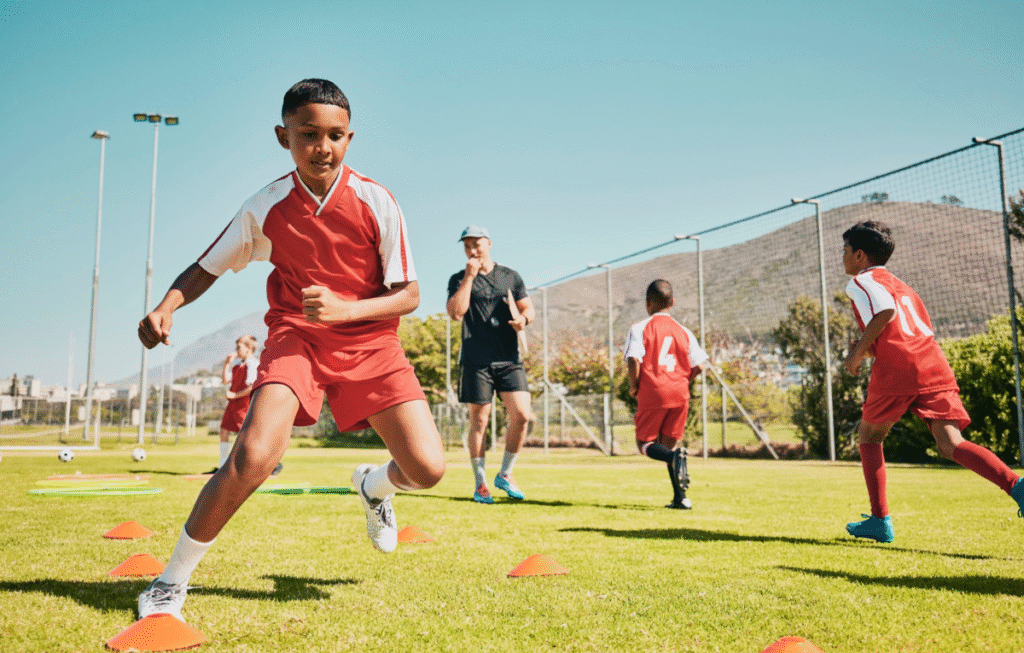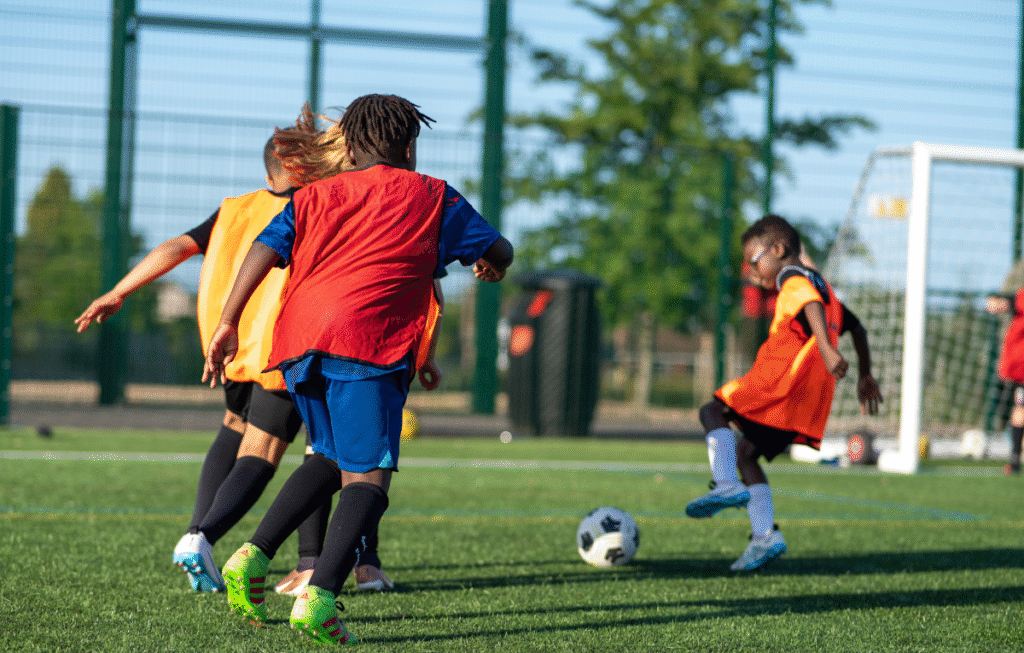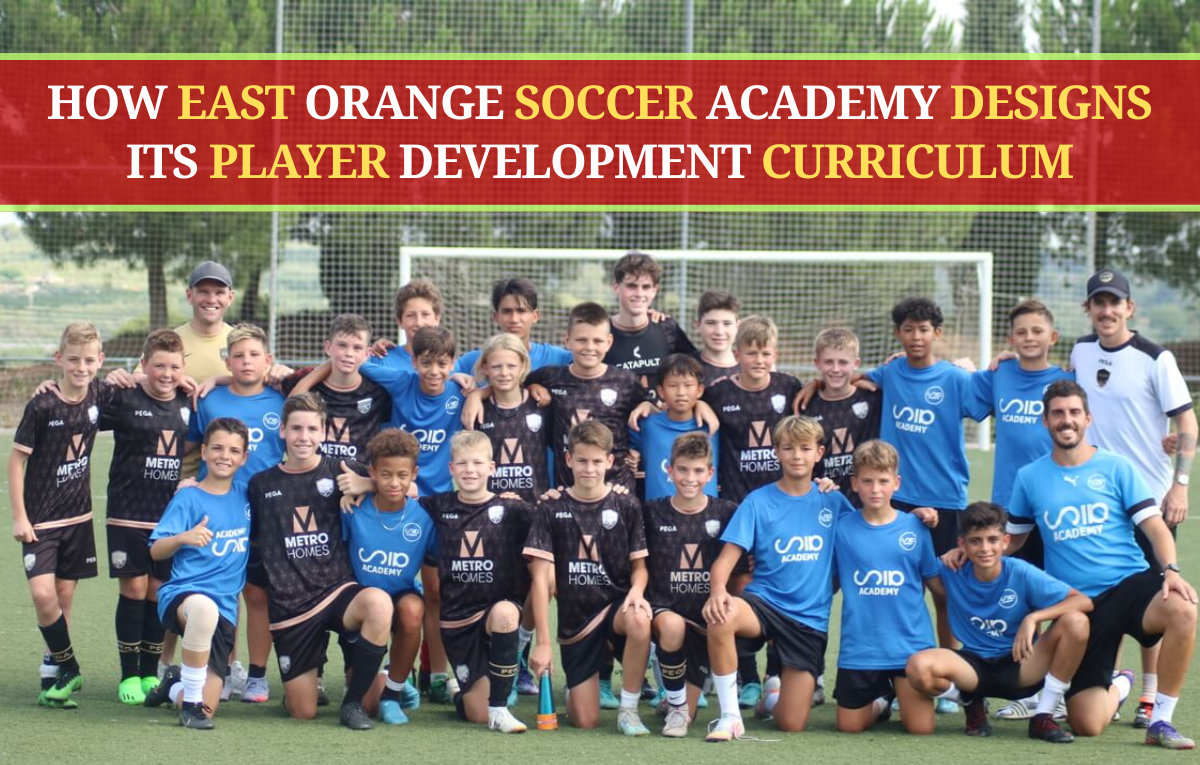At East Orange Soccer Academy (EOSA), we believe that gifted players are not born, but made from development. The elements that transform an average child into a confident, talented, and dependable player are all about hard work, a regular practice routine, seasoned coaches, and a structured approach to training.
EOSA’s Player Development Curriculum is more than a practice schedule—it’s a global vision that instructs each student to be well-rounded and successful at sports, as well as life.
Our Vision: Building Complete Players for Life

EOSA is committed not solely to the making of great soccer players, but also to the development of confident, kind, and disciplined people who find success in all areas of life.
Every child is different – some learn faster than others; some are very strong physically, others are more cerebral. Our methodology of teaching requires consideration of each child’s unique needs, pace, and potential.
Here, kids don’t learn merely to play with a ball, but also to acquire— teamwork and coordination, communication skills, self-discipline, leadership skill.
EOSA guarantees that no matter whether the child becomes a professional player, is on a school team, or simply plays for fun—they get a solid foundation that will last an entire lifetime.
The Foundation of Our Curriculum
EOSA’s whole training platform has four foundational pillars. These four pillars shape every session, practice, and game activity.
1. Technical Skills
Fundamental football skills like ball control, dribbling, passing, shooting, and receiving and controlling the ball are given particular importance.
This is the stage where children acquire the necessary skills of football playing. For example, teaching a 6-year-old to be steady while dribbling or helping an 8-year-old to use the right foot in passing—these small activities have a tremendous impact in future.
2. Tactical Understanding
This is all in creating the game’s “intelligence.” This is where kids learn to read the game—how to pass, when to shoot, and how to defend. Small-sided games foster decision-making and collaboration skills in children.
3. Physical Fitness
Creating a strong sporting body is as essential as learning technique. EOSA introduces fitness in an enjoyable manner—sprinting runs, hurdles, jumping games, and so much more enable kids to build speed, endurance, and agility.
4. Mental Toughness and Character Development
EOSA believes that a true athlete will learn from loss and remain humble in victory. Here, children develop self-confidence, focus, sportsmanship, and toughness.
These four components combine to make every child, not just an athlete, but also a better person.
Age-Specific Development Phases
Each age has different needs and learning processes of the child.
That’s why EOSA has split its curriculum into four main phases—so that each child is trained according to their age and level.
1. Foundation Phase (3–5 years): Learning through Play
At such an early age, children like to “feel” the game instead of “learning” it. At EOSA, children of this age are familiarized with football by playing entertaining games.
- Games involve running, stopping, and changing direction with the ball.
- Focus is laid on teamwork, sharing, and listening.
- Trainers promote the imagination and creativity of children.
- Sessions are kept short and enjoyable so that children do not become bored.
This stage develops confidence and interest in children, so they willingly adopt the game.
2. Development Phase (6–9 years): Consolidating Basic Skills
As kids develop, their bodies and minds are better coordinated. At this age, EOSA imparts basic techniques— passing well, dribbling the ball, and shooting when the time is apt.
By playing small-group games (3v3 or 5v5), children learn teamwork and spatial awareness. Children’s self-esteem, “I am a soccer player,” is developed during this phase.
3. Adolescence Development Phase (10–13 years): Building Skills and Knowledge
The game turns more serious now. Tactics begin to be understood by children. Training sessions become more intense and goal-oriented in preparation for competitive matches.
Ball control under pressure is instructed. Quick decision-making during attack and defense is instructed. Fitness, endurance, and strength are highlighted. Greater focus is given to leadership and communication. By age 13, children begin thinking of sports not merely as a pastime but as a serious interest.
4. Performance Phase (14–18 years): Preparation for Competition
Kids are teenagers now—this is the age when they are ready for school, club, or college levels. EOSA renders training more professional at this age—
- More advanced strategies and game analysis are included.
- They are educated to think and decide in match situations.
- Video analysis, fitness, and mental toughness receive special emphasis.
- College admissions and career in sports guidance is given.
Through this level, children become confident, intelligent, and competitive individuals.
Coaching Philosophy: The EOSA Way
EOSA’s coaching philosophy is aimed at learning prior to winning. Our coaches are aware that the real test of a child’s development is not winning or losing, but improvement and confidence.
Our coaches are not only teachers, but mentors and inspirers. They inspire each child to improve at their own pace and level.
Our Key Principles:
- Positive Reinforcement: Understanding and encouragement, not criticizing for errors.
- Progressive Learning: Gradually increasing difficulty relative to age and level of skill.
- Individual Focus: Determining each player’s strengths and weaknesses and developing a customized plan.
- Respect & Integrity: Educating respect for the game, teammates, opponents, and oneself in all situations.
Curriculum Structure and Training Methods

Each session is structured at EOSA. A typical training session appears as follows:
- Warm-Up & Agility Drills – Light exercise, running, and stretching to warm the body.
- Technical Skills Practice – Repetition exercises in passing, shooting, and ball control.
- Tactical Games – Building comprehension of the game in short matches.
- Fitness & Strength Training – Development of stamina, speed, and strength.
- Game Simulation – Training in actual-match conditions.
- Cool Down & Review – Post-session review and feedback.
Each practice has an overriding goal—long-term development of the player in-general.
The Role of Evaluation and Feedback
Evaluation at EOSA is continuous. Coaches observe each player’s improvement through a range of methods—
- Skill tests and performance reports
- One-on-one conversations (1-on-1 feedback sessions)
- Parent meetings
This assists players in determining their strength and weaknesses and assists parents in knowing where their child has gotten to.
Integration of Modern Technology and Data
EOSA uses the combination of traditional training and new technology. Video analysis, tracking software, and electronic reporting enable the players to track their progress themselves. This information indicates players how they run, their speed, and where they are weak.
Character and Leadership Training
Sport not only develops the body, but also character. EOSA educates children at all levels— to lead by example, to play together as a team, to be gracious in success and calm in failure, and to set objectives and apply themselves. These values remain with them not only on the field but also throughout life.
Match Play and Competitive Experience
- True development takes place when children gain the experience of a match.
- EOSA holds regular friendly matches, local leagues, and travel tournaments.
- These sessions give children real-life experience and confidence.
Parental Involvement in the Curriculum
EOSA is convinced that parents are the pillars of a child’s success. Therefore, the academy is doing Parent Workshops, Open Practice Days, and Progress Meetings as a way to involve parents in the whole process.
Parents are instructed on their role in giving support to kids, dealing with school and sports, and developing sportsmanship.
The Result: Confident, Skilled, and Inspired Players

EOSA’s Player Development Curriculum has transformed the lives of hundreds of kids today.
The players here are not just improved footballers, but also have acquired life skills such as teamwork, self-discipline, and leadership.
Numerous players have been picked for school and college teams, some have gone on to professional clubs—but the biggest achievement is that all players are now happy, confident, and motivated individuals.
Conclusion
The academics of East Orange Soccer Academy are not just a manual for training but a way to become successful. Children receive the entire package for both life and the game as we bring together the technical, tactical, and physical side along with the mental part of the game.
Each child’s journey—from their initial dribble to their most proud goal—is a tale of learning, growth, and shine with EOSA. When you enroll your child in EOSA, you’re not merely selecting a football academy — you’re selecting a devoted family that will help develop the next generation of players and leaders.
FAQs:-
What is the Player Development Curriculum at East Orange Soccer Academy?
It’s a structured training system that helps young athletes grow step-by-step—from learning basic skills to mastering advanced techniques.
What skills are emphasized at each stage?
Training focuses on technical, tactical, physical, and mental development—the four pillars of modern soccer.
What makes EOSA’s curriculum unique?
It blends technical excellence with character development, helping young athletes grow both as players and as individuals.
